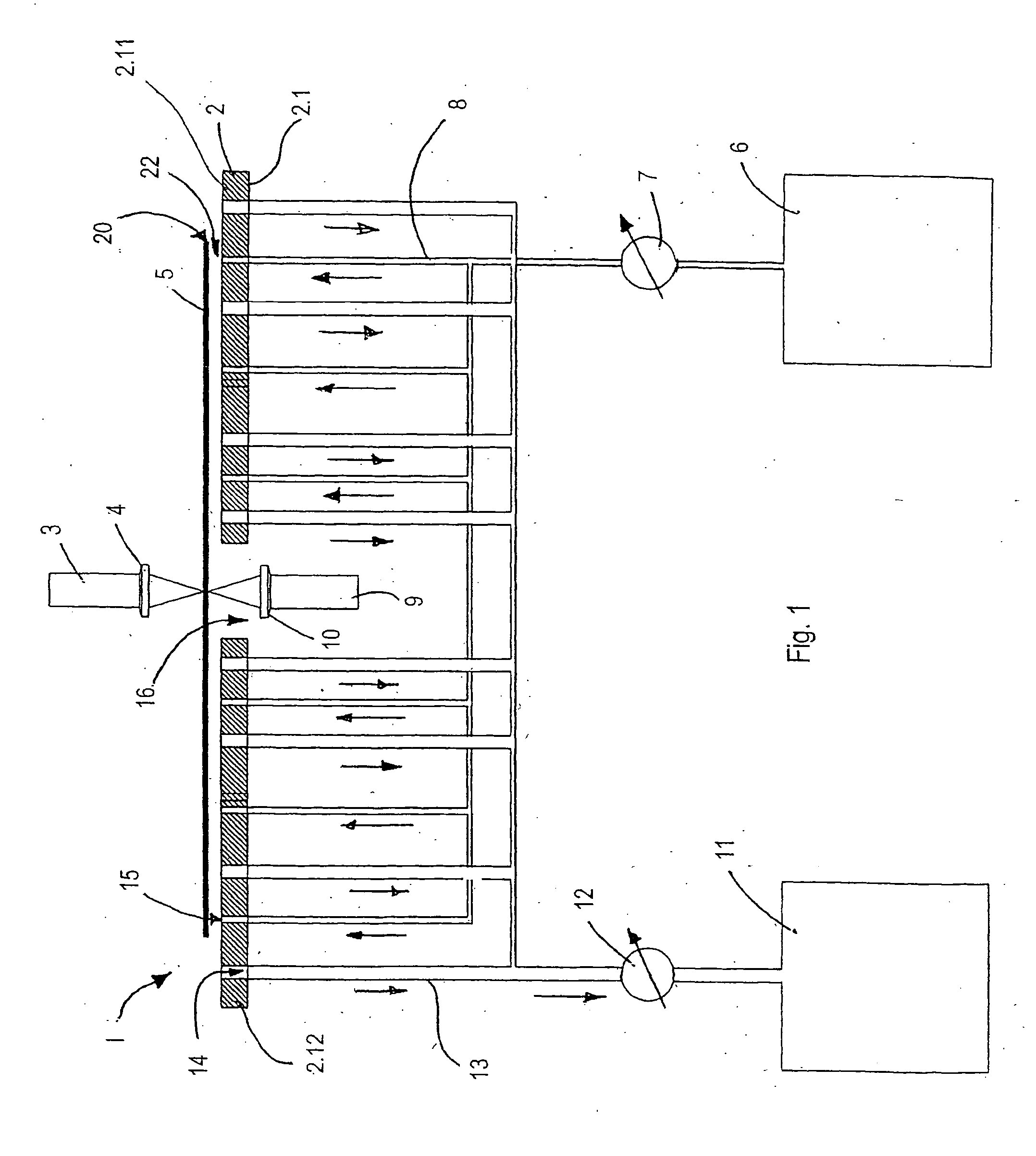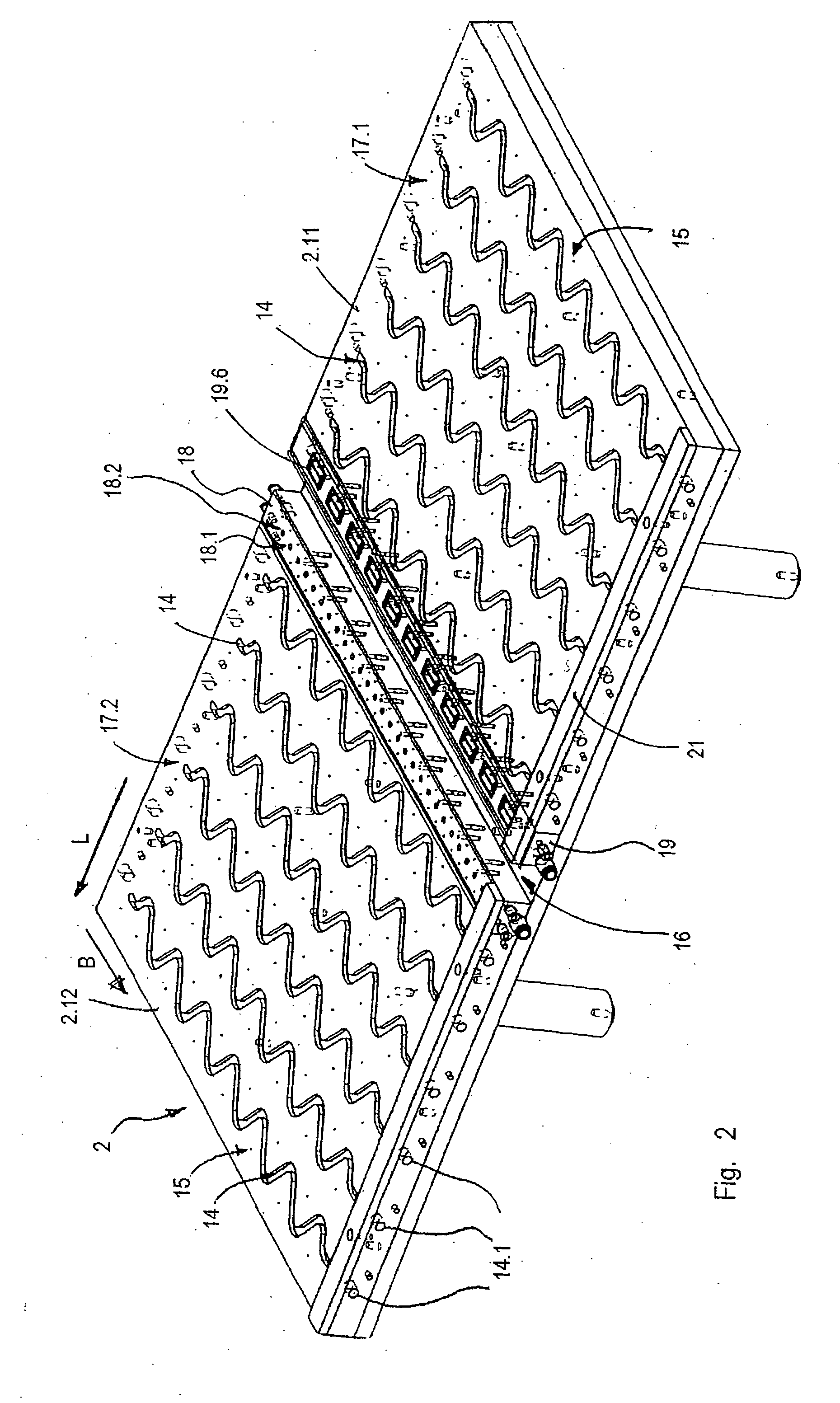Table for Receiving a Workpiece and Method for Processing a Workpiece on Such Table
a workpiece and table technology, applied in the field of tables for receiving workpieces and processing workpieces on such tables, can solve the problems of workpiece deformation, insufficient processing precision, and affecting the distance between workpieces and processing devices in a manner, so as to avoid sagging or bending of the substrate, avoid undesired bending of the workpiece plate, and ensure uniform pressure
- Summary
- Abstract
- Description
- Claims
- Application Information
AI Technical Summary
Benefits of technology
Problems solved by technology
Method used
Image
Examples
Embodiment Construction
[0017]FIG. 1 shows a device 1 comprising a table 2 according to the invention; shown schematically as a processing device is a laser apparatus, a flow generation apparatus having a take-off apparatus 11 and a pressure generation apparatus 6 which releases a pressurized fluid, e.g. nitrogen or another gas or gas mixture, in this case air. The disc-like workpiece 5 is, for example, a glass plate, a ceramic plate or another plate of brittle substrate material which is to be processed by means of the laser apparatus. In the present exemplary and preferred embodiment of the invention according to FIG. 1, the disc-like workpiece 5 is a substrate ceramic plate or a glass substrate plate.
[0018] The table 2 substantially comprises a tabletop 2.1 which forms a support surface facing upwards. It comprises two segments which are in the form of two rectangular halves 2.11 and 2.12 of equal size. The top faces 17.1 and 17.2 of the segments 2.11, 2.12 each form an extensive section of the support...
PUM
| Property | Measurement | Unit |
|---|---|---|
| diameter | aaaaa | aaaaa |
| diameter | aaaaa | aaaaa |
| diameter | aaaaa | aaaaa |
Abstract
Description
Claims
Application Information
 Login to View More
Login to View More - R&D
- Intellectual Property
- Life Sciences
- Materials
- Tech Scout
- Unparalleled Data Quality
- Higher Quality Content
- 60% Fewer Hallucinations
Browse by: Latest US Patents, China's latest patents, Technical Efficacy Thesaurus, Application Domain, Technology Topic, Popular Technical Reports.
© 2025 PatSnap. All rights reserved.Legal|Privacy policy|Modern Slavery Act Transparency Statement|Sitemap|About US| Contact US: help@patsnap.com



